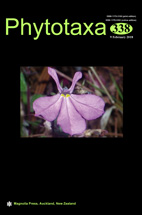Abstract
The Libyan flora was last documented in a series of volumes published between 1976 and 1989. Since then there has been a substantial realignment of family and generic boundaries and the discovery of many new species. The lack of an update or revision since 1989 means that the Libyan Flora is now out of date and requires a reassessment using modern approaches. Here we report initial efforts to provide an updated checklist covering 43 families out of the 150 in the published flora of Libya, including 138 genera and 411 species. Updating the circumscription of taxa to follow current classification results in 11 families (Coridaceae, Guttiferae, Leonticaceae, Theligonaceae, Tiliaceae, Sterculiaceae, Bombacaeae, Sparganiaceae, Globulariaceae, Asclepiadaceae and Illecebraceae) being included in other generally broader and less morphologically well-defined families (APG-IV, 2016). As a consequence, six new families: Hypericaceae, Adoxaceae, Lophiocarpaceae, Limeaceae, Gisekiaceae and Cleomaceae are now included in the Libyan Flora. This update results in those 43 families being represented by 38 accounts. Fifty-five percent of species remain unchanged, the remaining 45% are reclassified at the family, genus or species level based on modern treatments, illustrating the need for this update and the urgent need for a review of the entire floristic treatment of Libya in support of the conservation of Libya’s biodiversity.

